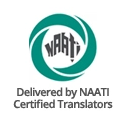
Unearthing Ancient Roots
The Kyrgyz language ancestry stretches back millennia, tracing its roots to the Common Turkic language spoken by nomadic tribes roaming the Eurasian steppe. It belongs to the Kipchak branch of the Turkic family, sharing linguistic ties with Kazakh and Karakalpak. Around the 6th century AD, Kyrgyz began to diverge, influenced by interactions with neighboring languages like Sogdian and Old Uyghur. This period laid the foundation for the unique sound system and vocabulary that define Kyrgyz today.
Embracing Change While Preserving Identity
The 10th century marked a turning point for the Kyrgyz people. The arrival of Islam ushered in a new era, not just religiously, but linguistically as well. The Kyrgyz adopted the Perso-Arabic script, a change that facilitated the spread of Islamic texts and scholarship. This script remained in use for centuries, leaving a permanent mark on Kyrgyz vocabulary with loanwords from Arabic and Persian enriching the language.
Beyond the Borders
Kyrgyz is spoken by over 5.15 million people worldwide, mainly in Kyrgyzstan as the official language, gracing government documents, education systems, and media outlets. Its influence extends beyond its homeland, with vibrant Kyrgyz communities thriving in neighboring countries like Kazakhstan, Tajikistan, and Uzbekistan. Pockets of Kyrgyz speakers can also be found scattered across Afghanistan, Russia, and even further afield, reflecting the historical migrations of the Kyrgyz people.
Unique Sound Features
The Kyrgyz language boasts a fascinating sound system that sets it apart from its Turkic relatives. One of the most intriguing features is vowel harmony. For instance, the word “water” is pronounced as “suu” instead of “soa.” Vowel harmony dictates that vowels within a word must belong to the same class, either front (i, ü, e, ö) or back (a, o, u). This creates a beautiful internal rhyme and melodic balance within Kyrgyz words.
Preserving Traditions through Language
The Kyrgyz language acts as a vital bridge to Kyrgyz culture today. This is evident in Kyrgyz literature, famous for its epic poems like “Manas” and lyrical works that express love, loss, and the beauty of the Kyrgyz landscape.
Traditional Kyrgyz music beautifully capture these themes as well. “Arman” songs, for example, use poignant words to express the deep sorrow of losing someone dear. Its lyrics might describe the emptiness left behind or the yearning for the departed. In contrast, “Surnay” melodies, often accompanied by energetic drumming, are filled with joyful Kyrgyz words, celebrating new beginnings and love.
Proverbs and riddles, whispered from parents to children, teach valuable lessons about life and Kyrgyz ways. This is a language that keeps traditions alive, ensuring they’re passed down from generation to generation.
Navigating the Digital Age
The digital age presents a double-edged sword for the Kyrgyz language. English dominates online communication, pushing Kyrgyz to the margins. Classic Kyrgyz literature currently resides mostly offline, limiting accessibility for younger generations and non-native speakers. Resources for learning Kyrgyz are scarce, and educational technology often overlooks the language.
However, by harnessing digital tools and fostering online Kyrgyz content creation, the language can bridge geographical divides. They can connect Kyrgyz communities worldwide, ensuring the language not only survives but thrives in the digital age. This will also promote cultural exchange and global appreciation for Kyrgyz heritage.
Our Translation Services
At TranslateSwift, we understand the importance of clear and accurate communication across languages. Our team of expert linguists, well-versed in the cultural context of Kyrgyz, is here to bridge the gap. Whether you require Kyrgyz translation for study documents, business contracts or personal certificates, TranslateSwift can ensure accuracy, reliability, and cultural sensitivity.
Other Languages
- English
- Spanish
- German
- Dutch
- French
- Italian
- Afrikaans
- Albanian
- Amharic
- Arabic
- Armenian
- Azerbaijani
- Basque
- Belarusian
- Bengali
- Bosnian
- Bulgarian
- Cantonese
- Catalan
- Cebuano
- Chichewa
- Chinese - Simplified
- Chinese - Cantonese
- Chinese - Traditional
- Chinese - Mandarin
- Corsican
- Croatian
- Creole
- Czech
- Danish
- Dari
- Esperanto
- Estonian
- Farsi
- Filipino
- Finnish
- Frisian
- Galician
- Georgian
- Greek
- Gujarati
- Haitian Creole
- Hausa
- Hawaiian
- Hebrew
- Hindi
- Hmong
- Hungarian
- Icelandic
- Igbo
- Indonesian
- Irish
- Japanese
- Javanese
- Kannada
- Kazakh
- Khmer
- Korean
- Kurdish
- Kyrgyz
- Lao
- Latin
- Latvian
- Lithuanian
- Luxembourgish
- Macedonian
- Malagasy
- Malay
- Malayalam
- Maltese
- Maori
- Marathi
- Mongolian
- Montenegrin
- Myanmar
- Nepali
- Norwegian
- Odia
- Pashto
- Persian
- Polish
- Portuguese
- Punjabi
- Romanian
- Russian
- Samoan
- Scots Gaelic
- Serbian
- Sesotho
- Shona
- Sindhi
- Sinhala
- Slovak
- Slovenian
- Somali
- Sundanese
- Swahili
- Swedish
- Tajik
- Tagalog
- Tamil
- Telugu
- Thai
- Turkish
- Ukrainian
- Urdu
- Uyghur
- Uzbek
- Vietnamese
- Welsh
- Xhosa
- Yiddish
- Yoruba
- Zulu
